
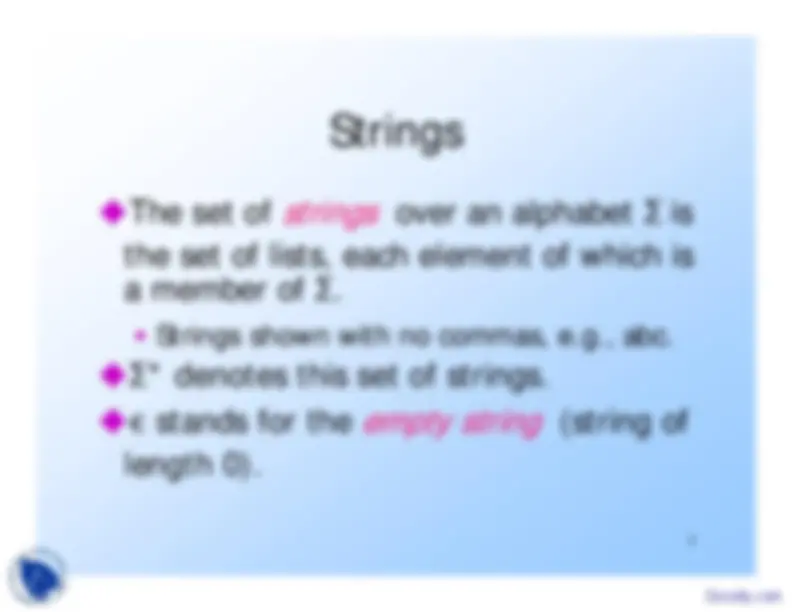
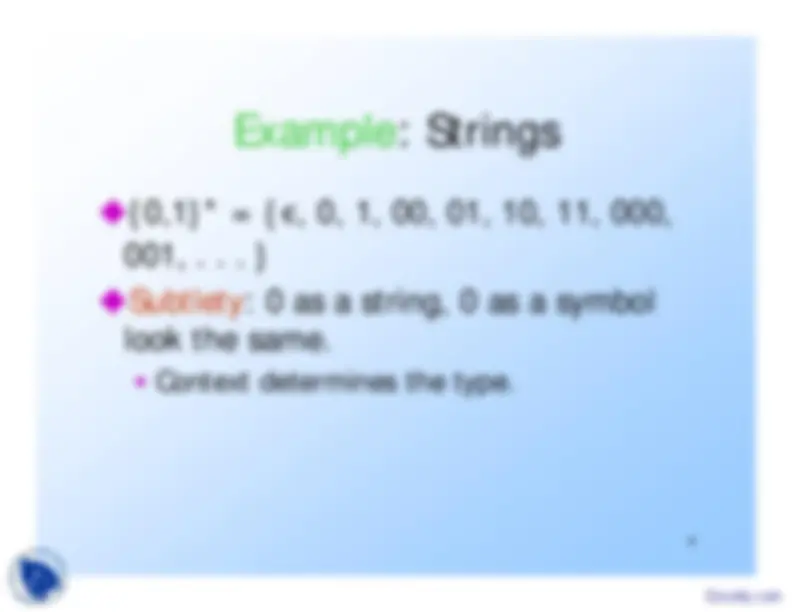
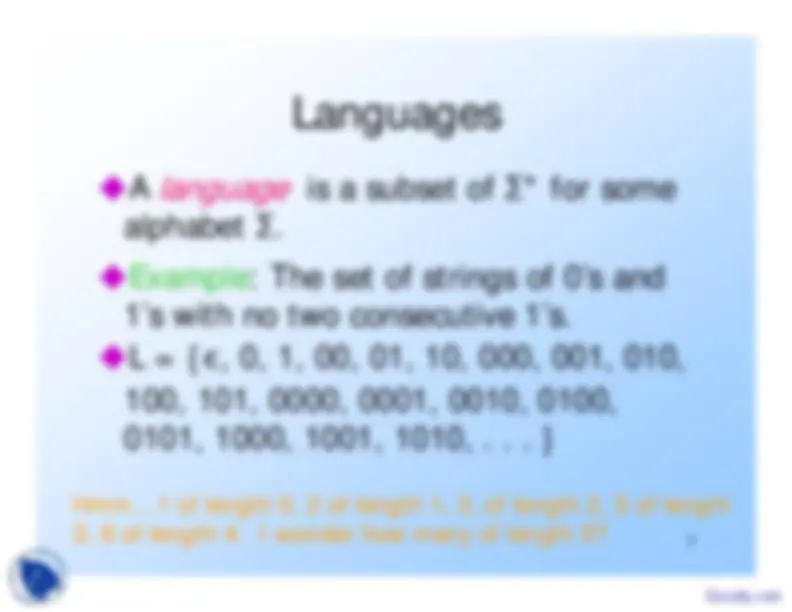
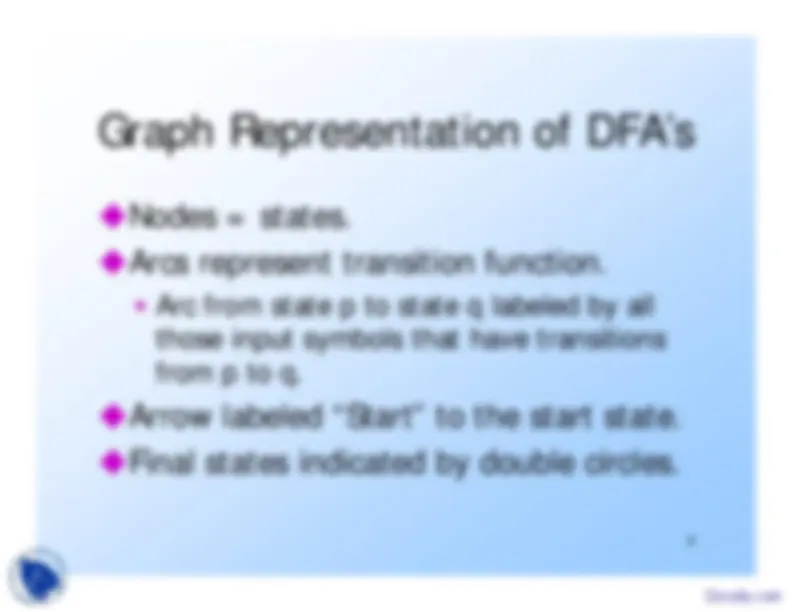
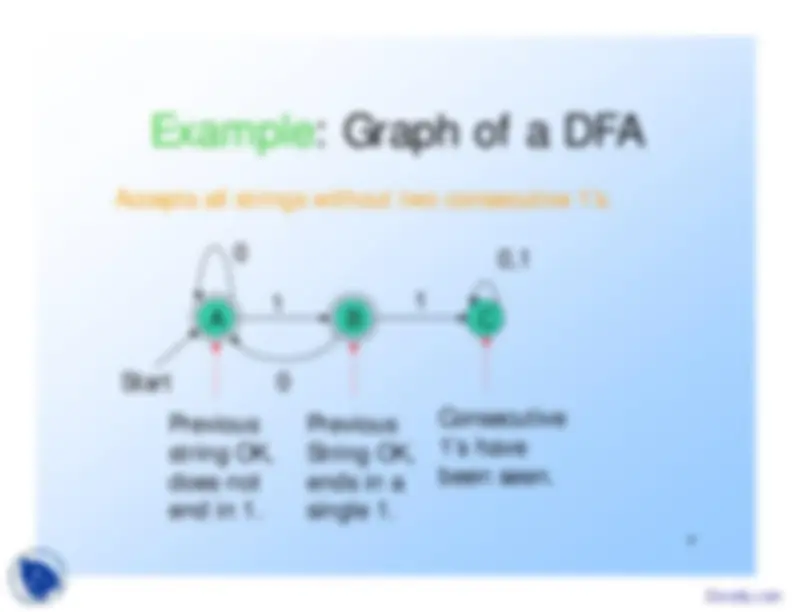
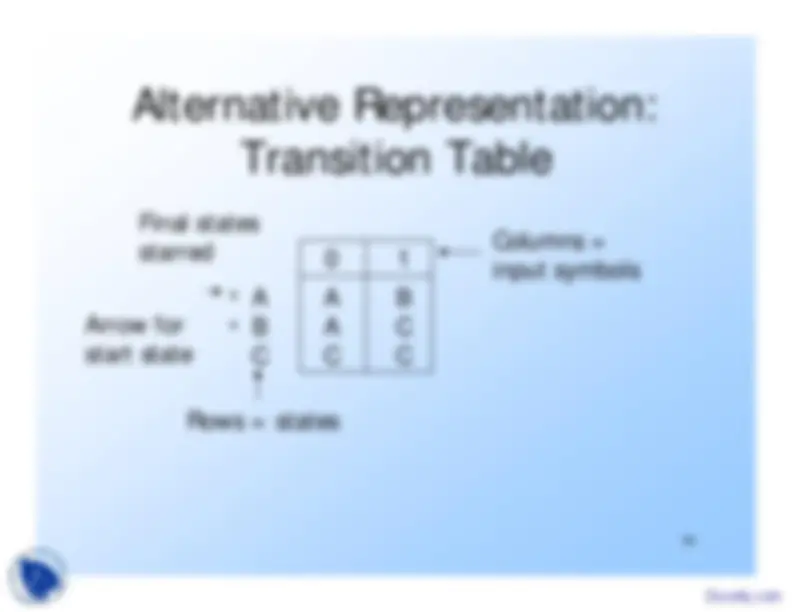
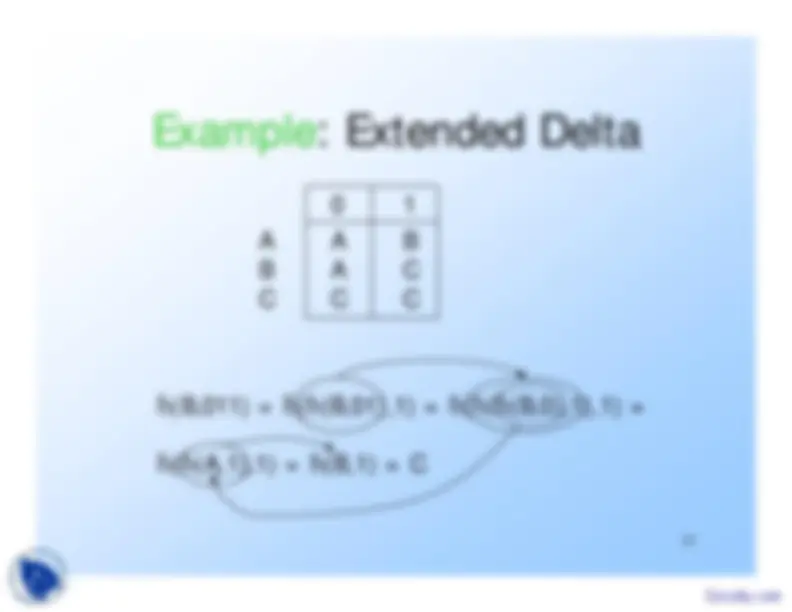
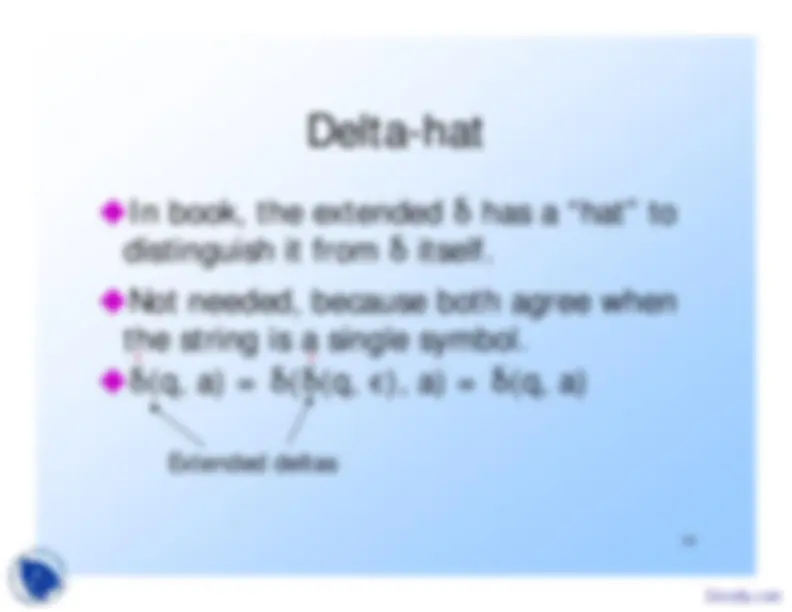
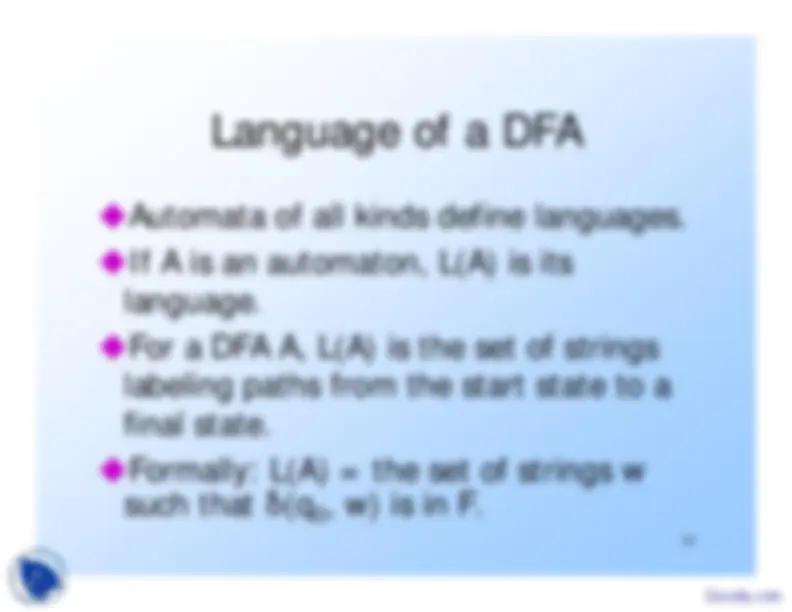
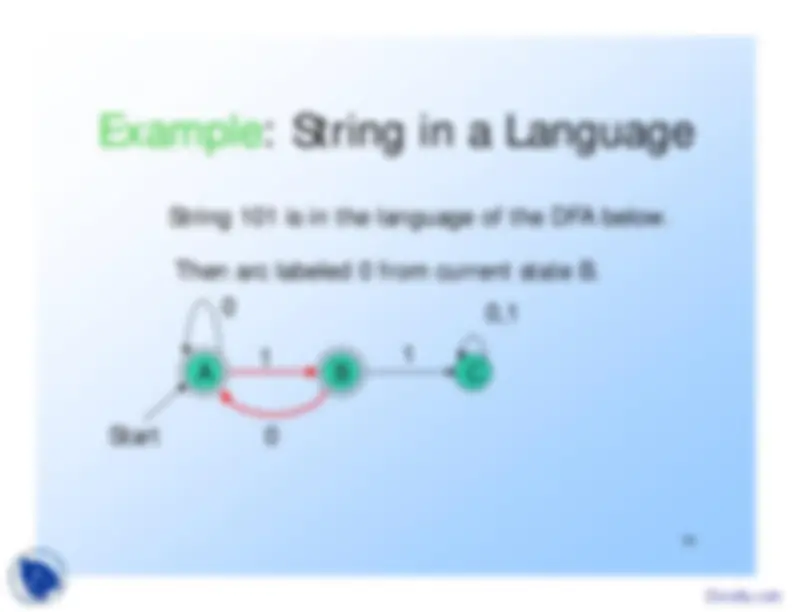
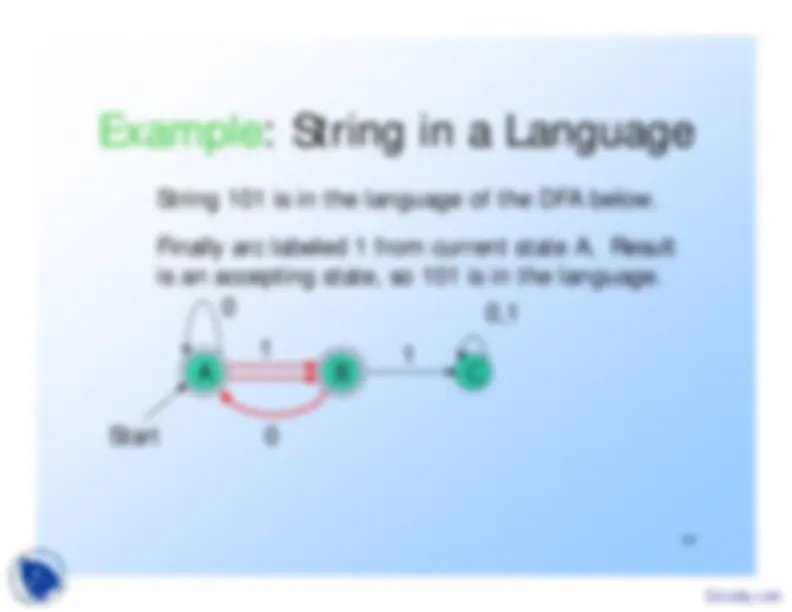
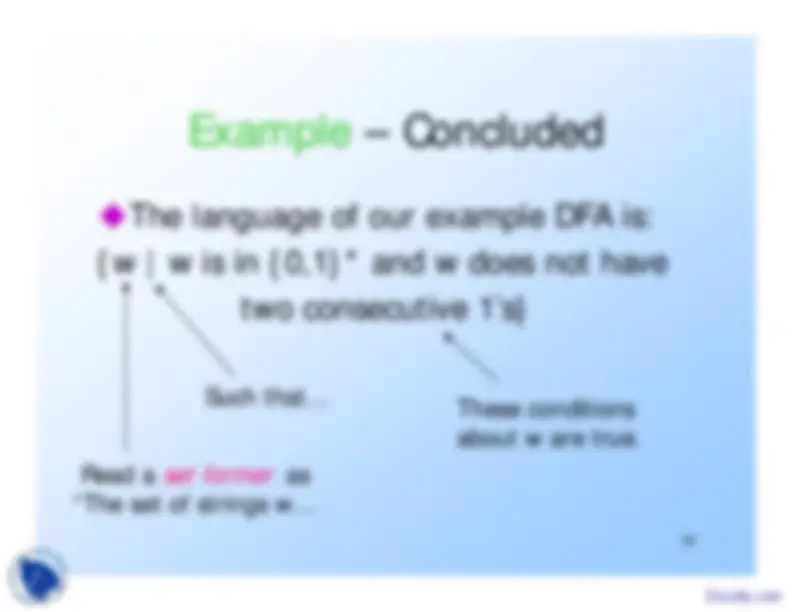
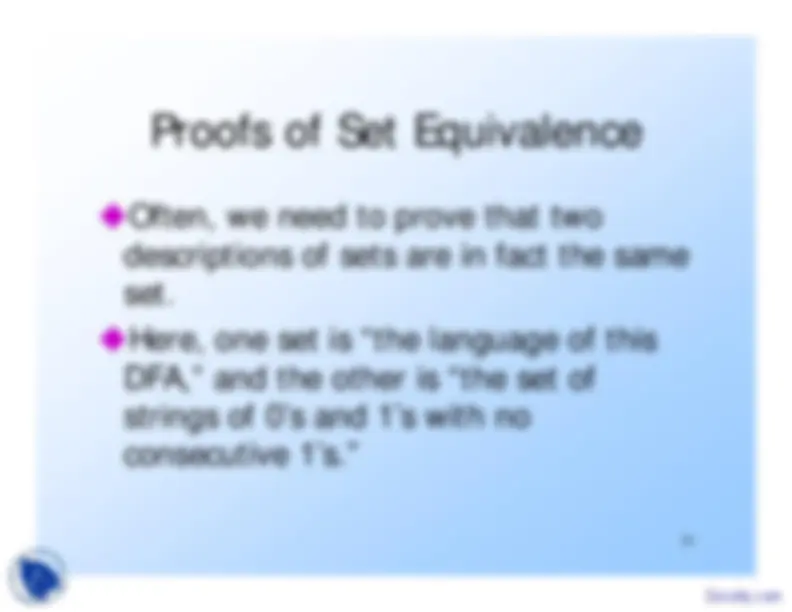
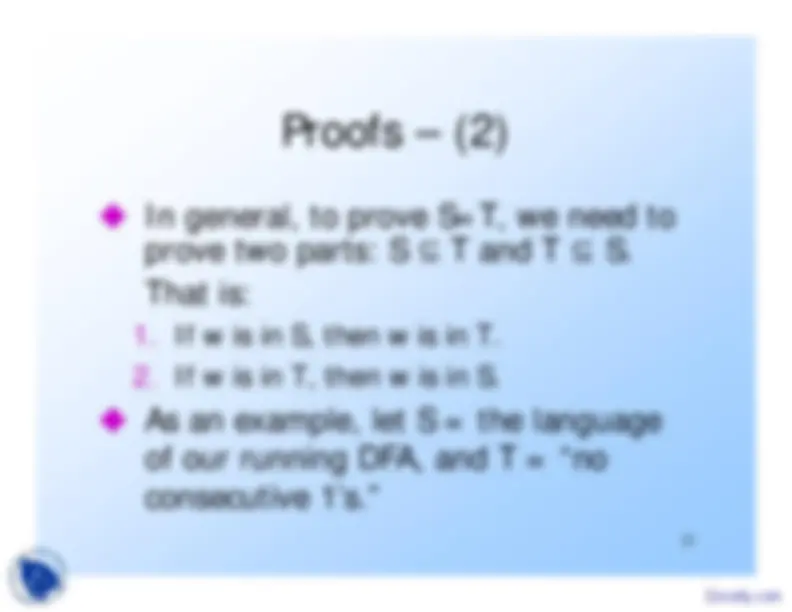
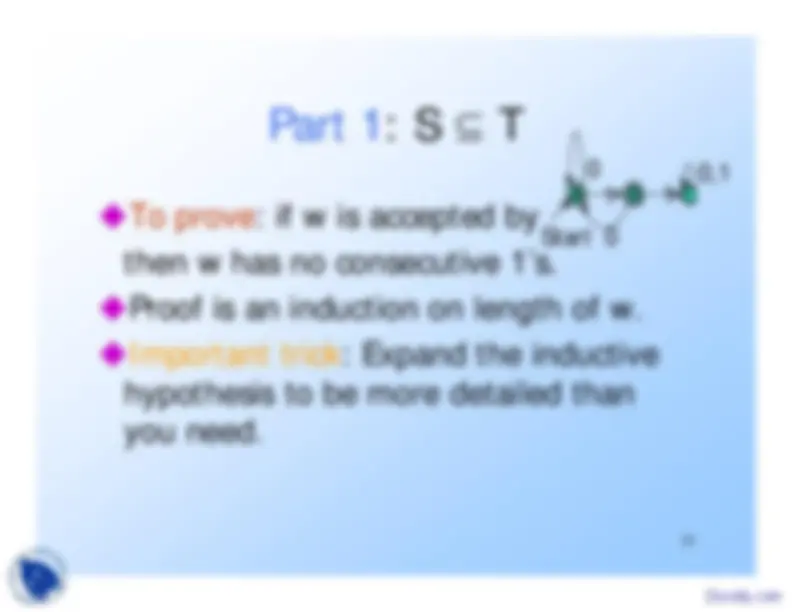
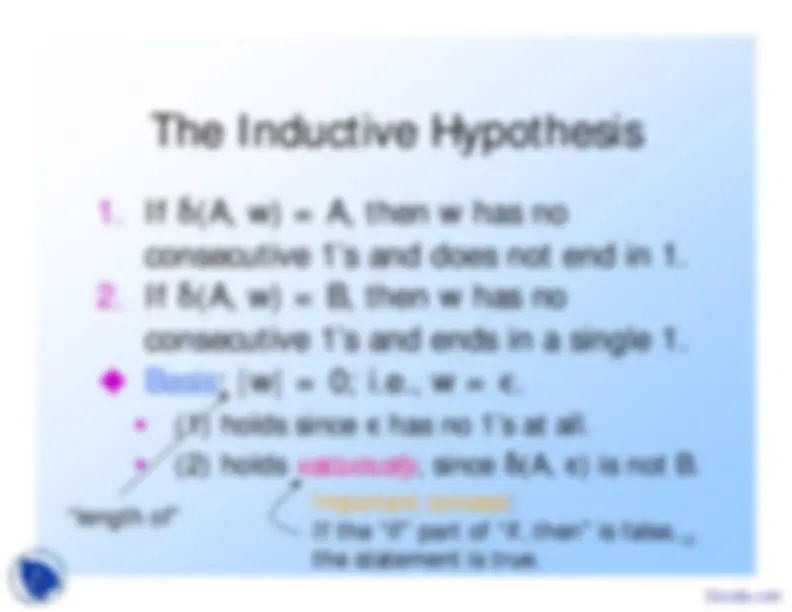
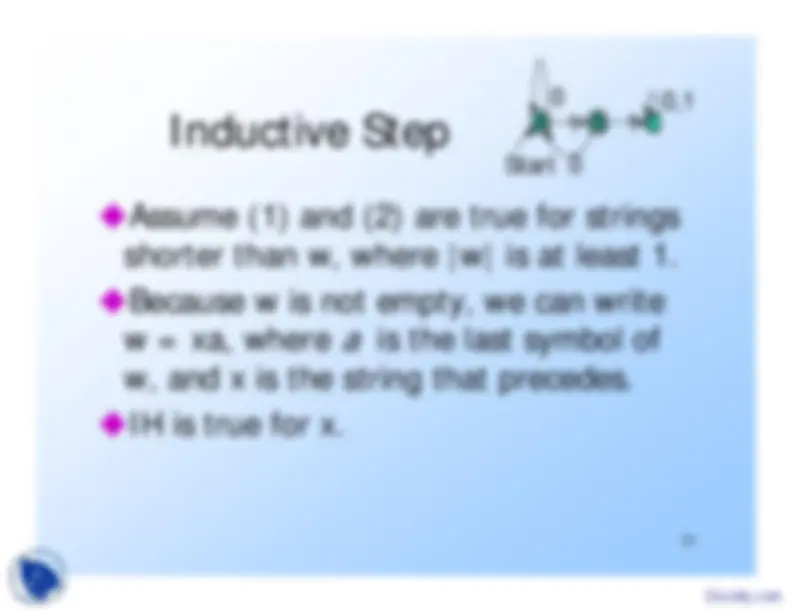
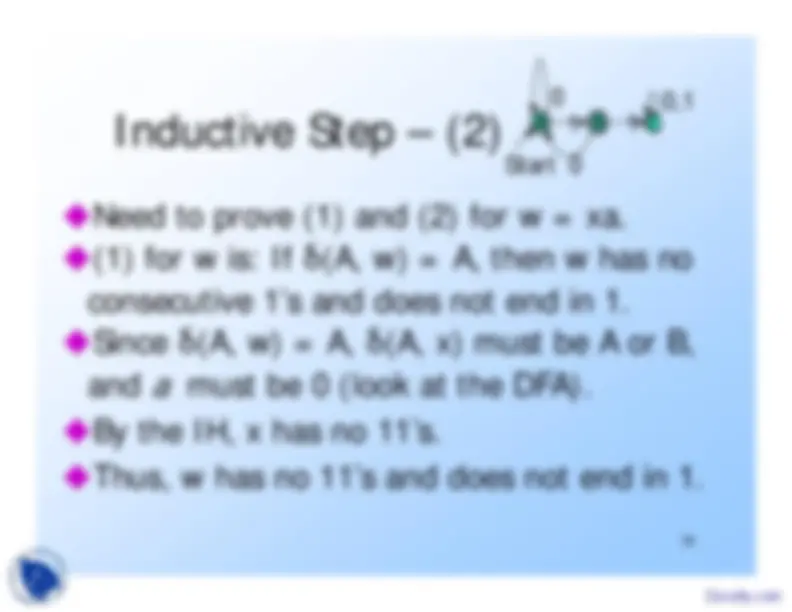
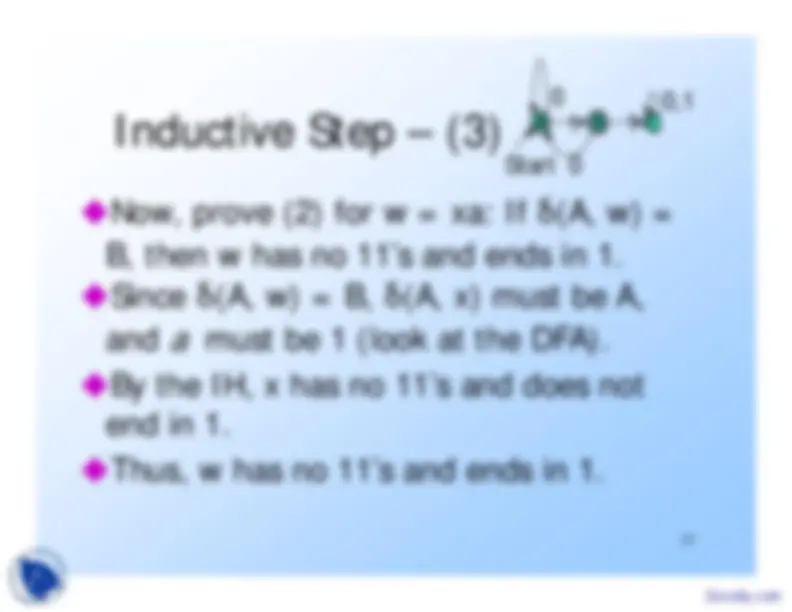
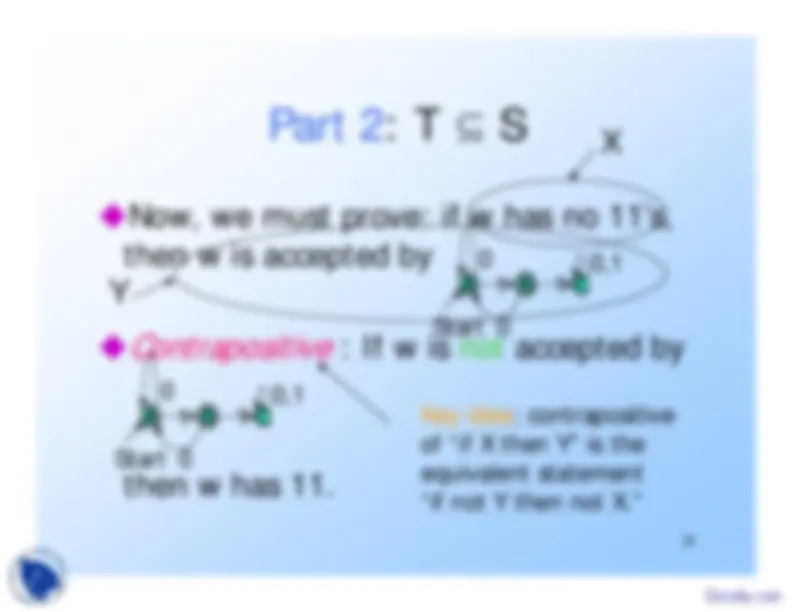
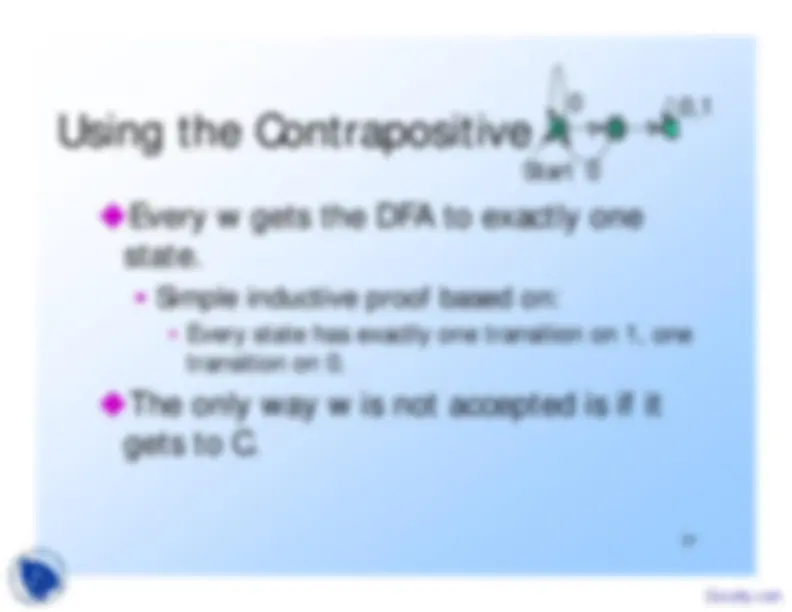
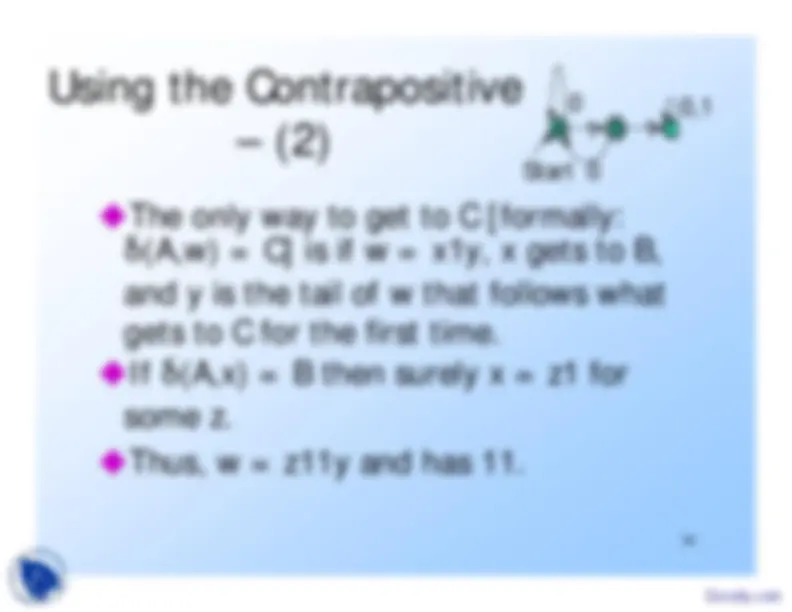
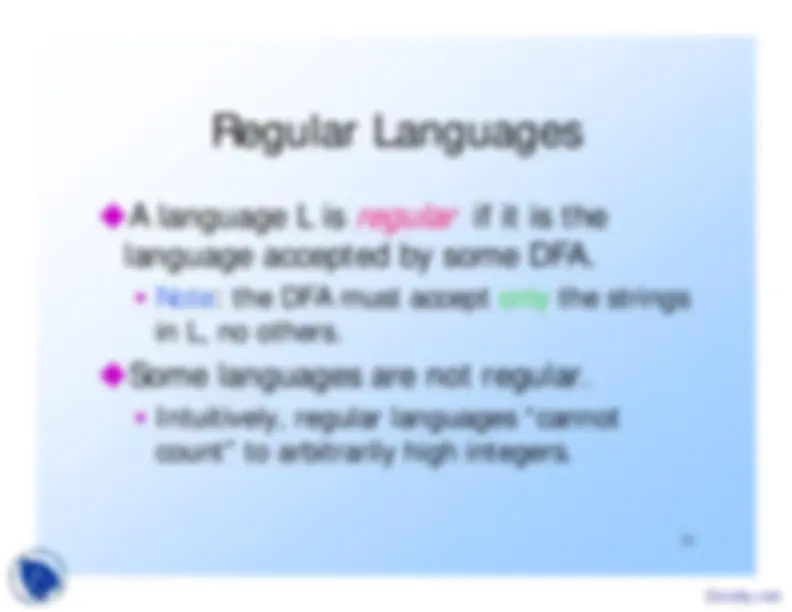
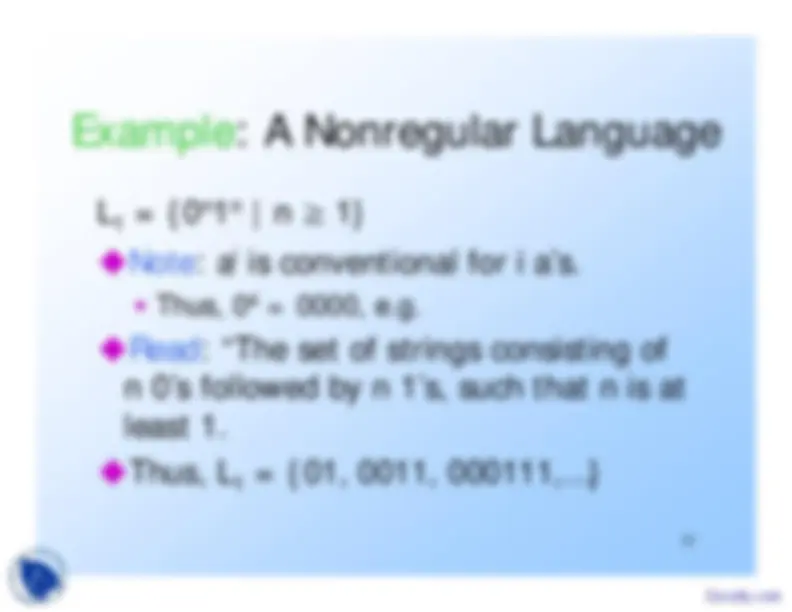

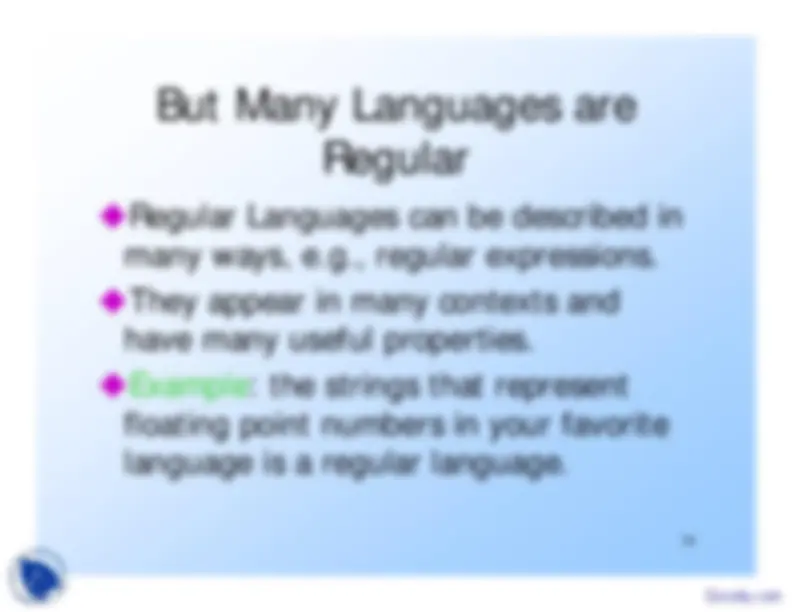
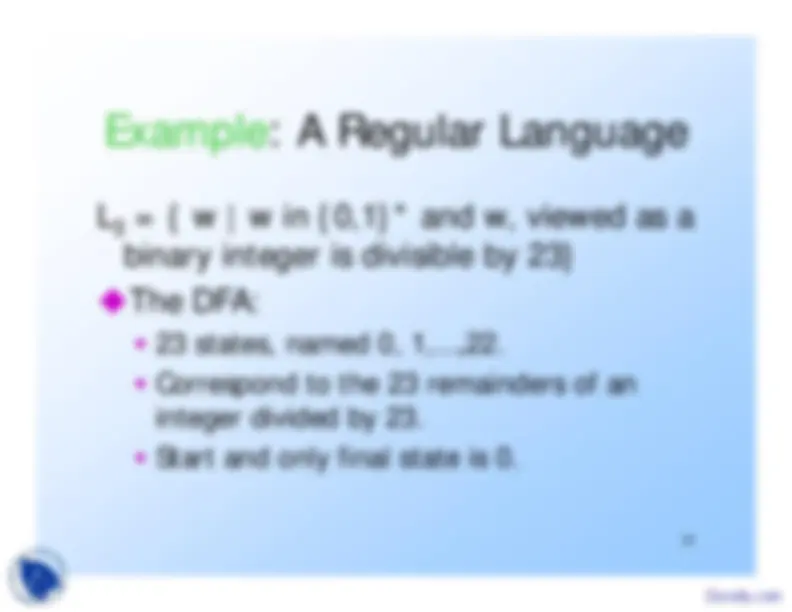
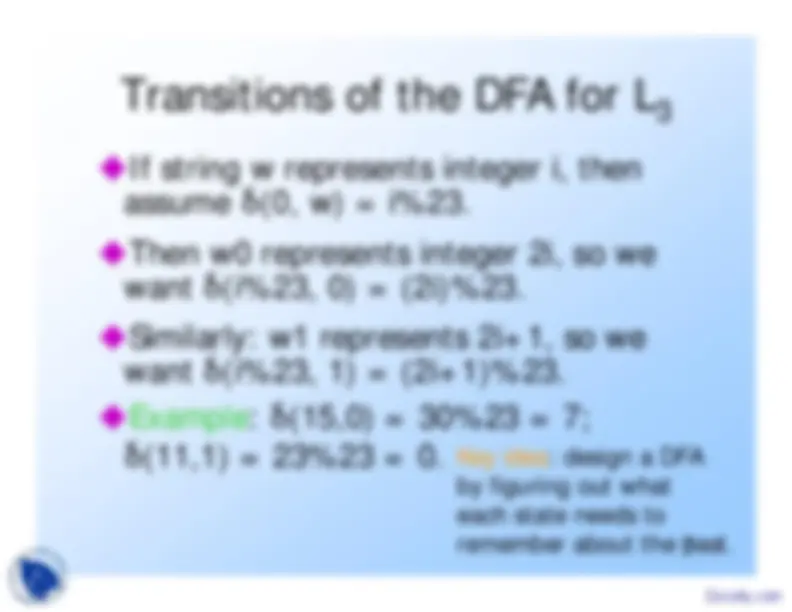
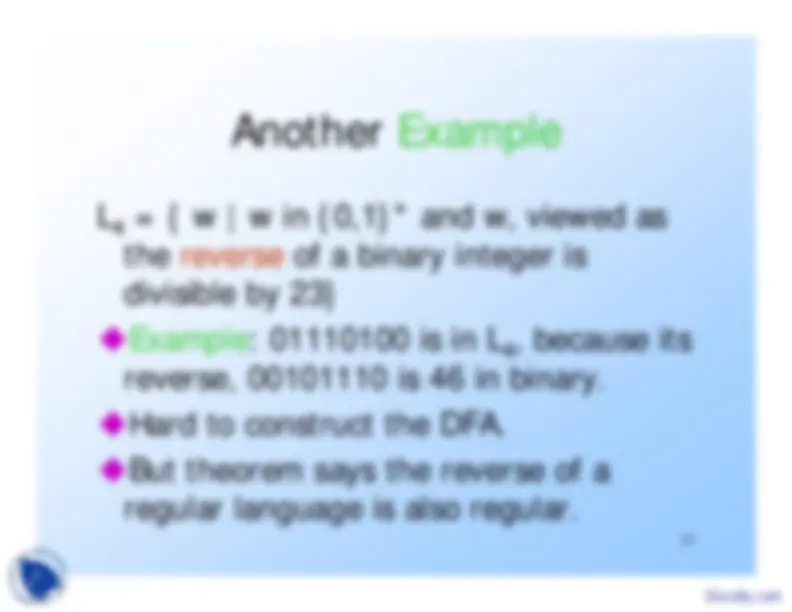


Study with the several resources on Docsity

Earn points by helping other students or get them with a premium plan


Prepare for your exams
Study with the several resources on Docsity

Earn points to download
Earn points by helping other students or get them with a premium plan
Community
Ask the community for help and clear up your study doubts
Discover the best universities in your country according to Docsity users
Free resources
Download our free guides on studying techniques, anxiety management strategies, and thesis advice from Docsity tutors
Some concept of Automata and Complexity Theory are Administrivia, Closure Properties, Context-Free Grammars, Decision Properties, Deterministic Finite Automata, Intractable Problems, More Undecidable Problems. Main points of this lecture are: Languages, Deterministic Finite Automata, Automata, Representations of Automata, Alphabet, Unicode, Finite Set, Binary Alphabet, Strings, Empty String
Typology: Slides
1 / 37

This page cannot be seen from the preview
Don't miss anything!






























1
Languages
Deterministic Finite Automata
Representations of Automata
2
An
is any finite set of
symbols.
Examples: ASCII, Unicode, {0,1} (
4
ε
Subtlety: 0 as a string, 0 as a symbol look the same.
Context determines the type.
5
is a subset of
alphabet
Example: The set of strings of 0’s and 1’s with no two consecutive 1’s.
ε
Hmm… 1 of length 0, 2 of length 1, 3, of length 2, 5 of length3, 8 of length 4.
I wonder how many of length 5?
7
Takes two arguments: a state and an input symbol.
δ
(q, a) = the state that the DFA goes
to when it is in state
and input
is
received.
8
Nodes = states.
Arcs represent transition function.
Arc from state p to state q labeled by allthose input symbols that have transitionsfrom p to q.
Arrow labeled “Start” to the start state.
Final states indicated by double circles.
10
0
1
A
A
B
B
A
C
C
C
C
Rows = states
Columns =input symbols
Final statesstarred
Arrow forstart state
11
We describe the effect of a string of inputs on a DFA by extending
δ
to a
state and a string.
Induction on length of string.
Basis:
δ
(q,
ε
) = q
Induction:
δ
(q,wa) =
δ
δ
(q,w),a)
w is a string; a is an input symbol.
13
0
1
A
A
B
B
A
C
C
C
C
δ
(B,011) =
δ
(
δ
(B,01),1) =
δ
(
δ
(
δ
(B,0),1),1) =
δ
(
δ
(A,1),1) =
δ
(B,1) = C
14
In book, the extended
δ
has a “hat” to
distinguish it from
δ
itself.
Not needed, because both agree when the string is a single symbol.
δ
(q, a) =
δ
δ
(q,
ε
), a) =
δ
(q, a)
˄
˄
Extended deltas
16
Start
1
0
A
C
B
1
0
0,
String 101 is in the language of the DFA below.Start at A.
17
Start
1
0
A
C
B
1
0
0,
String 101 is in the language of the DFA below.Follow arc labeled 1.
19
Start
1
0
A
C
B
1
0
0,
Finally arc labeled 1 from current state A.
Result
String 101 is in the language of the DFA below.is an accepting state, so 101 is in the language.
20
The language of our example DFA is:
{w | w is in {0,1}* and w does not have
two consecutive 1’s}
Read a
set former
as
“The set of strings w…
Such that…
These conditionsabout w are true.